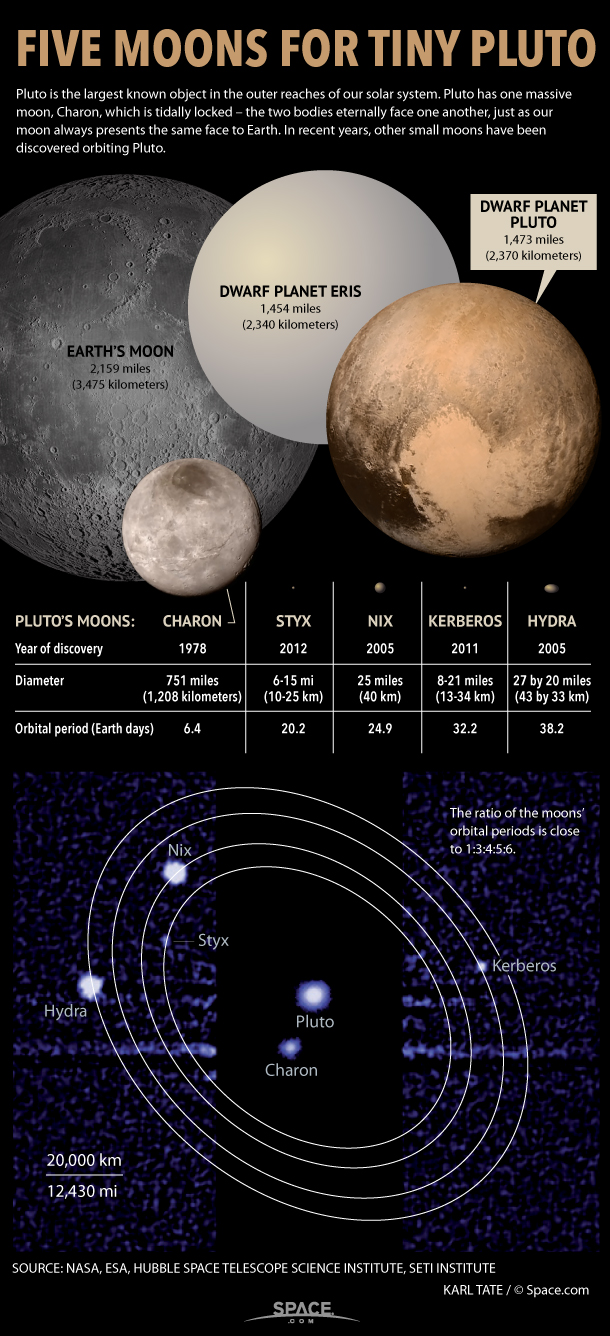Pluto's 5 Moons Explained: How They Measure Up (Infographic)

Pluto is the second-largest object in the outer reaches of our solar system, barely smaller than another dwarf planet, Eris.
Charon, Pluto’s most massive moon, was discovered in 1978. Charon has a diameter of 648 miles (1,043 kilometers) and orbits Pluto at a distance of 12,200 miles (19,640 kilometers).
Charon completes one orbit in 6.4 Earth days, which is the same time it takes Pluto to rotate once on its axis. As a result, the two bodies are tidally locked, eternally facing one another, just as our moon always presents the same face to Earth. [Photos: Pluto and its Moons]
In recent years, other small moons of Pluto have been discovered orbiting the distant dwarf planet. Nix and Hydra, both discovered in 2005, each have a diameter of about 25 miles (40 kilometers).
Kerberos, found in 2011, is smaller at 8 to 21 miles in diameter (13 to 34 kilometers). The latest discovery, Styx, was found in 2012 and is the smallest moon so far, only 6 to 15 miles across (10 to 25 kilometers).
Join our Space Forums to keep talking space on the latest missions, night sky and more! And if you have a news tip, correction or comment, let us know at: community@space.com.
Get the Space.com Newsletter
Breaking space news, the latest updates on rocket launches, skywatching events and more!

Karl's association with Space.com goes back to 2000, when he was hired to produce interactive Flash graphics. From 2010 to 2016, Karl worked as an infographics specialist across all editorial properties of Purch (formerly known as TechMediaNetwork). Before joining Space.com, Karl spent 11 years at the New York headquarters of The Associated Press, creating news graphics for use around the world in newspapers and on the web. He has a degree in graphic design from Louisiana State University and now works as a freelance graphic designer in New York City.